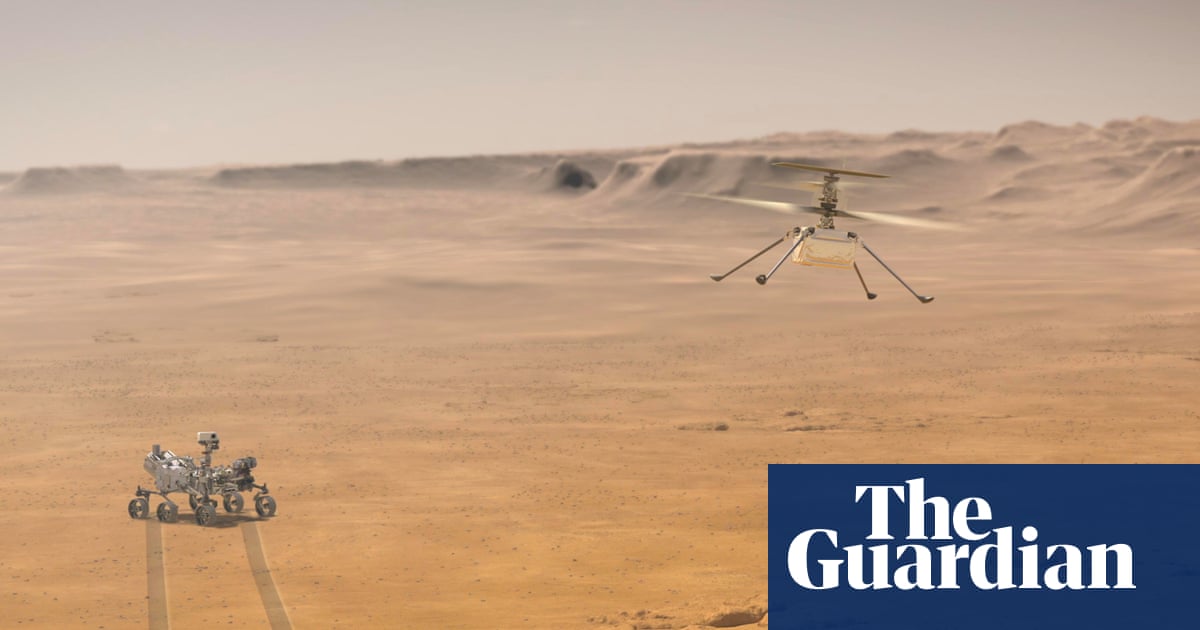
Nasa will attempt to fly a miniature helicopter above the surface of Mars on Monday in what would be the first powered, controlled flight of an aircraft on another planet.
If all goes according to plan, the 1.8kg helicopter will slowly take off to a height of three meters above the surface of Mars, hover for 30 seconds, and then rotate before descending to a soft landing on all four legs. The flight will operate at 3:30 AM Eastern Time (8:30 AM BST / 7:30 AM GMT). But data confirming the outcome is not expected to reach NASA until about three hours later.
The test flight will take place 173 million miles from Earth, at the bottom of a huge Martian basin called Jezero Crater. Success depends on Ingenuity operating the preprogrammed flight instructions autonomously.
“The moment our team has been waiting for is almost here,” said project manager Ingenuity, MiMi Aung. NASA compares the experiment to the Wright Brothers’ feat 117 years ago – a small piece of wing cloth from the original Wright flyer has been placed under Ingenuity’s solar panel.
The robotic helicopter was carried to the red planet in the belly of Nasa’s Mars rover Perseverance, which landed in Jezero Crater on Feb. 18 after a nearly seven-month journey through space.
NASA hopes to receive images and video of the flight from cameras mounted on the helicopter and the Perseverance rover, which is parked 76 meters away.
If the test passes, Ingenuity will undertake several additional, longer flights in the coming weeks, although it will need to rest for four to five days in between to recharge the batteries. The prospects for future flights rest largely on a safe landing at four points the first time.
“It doesn’t have a self-righting system, so if we have a bad landing that’s the end of the mission,” Aung said. An unexpectedly strong gust of wind is a potential danger that could spoil the flight.
NASA hopes Ingenuity – a technology demonstration separate from Perseverance’s primary mission to search for traces of ancient microorganisms – paves the way for aerial surveillance of Mars and other solar system destinations, such as Venus or Saturn’s moon Titan.
Although Mars has much less gravity than Earth, its atmosphere is only 1% as dense, which poses a special challenge for flying. Engineers equipped Ingenuity with rotor blades four feet long and spinning faster than would be needed on Earth for an airplane of this size. The design has been successfully tested in vacuum chambers built at JPL to simulate conditions on Mars, but it remains to be seen if Ingenuity will fly on the red planet.
The small, lightweight aircraft has already passed an early critical test by demonstrating that it could withstand nighttime temperatures down to -90C, by charging only solar energy and keeping the internal components properly heated.
The scheduled flight was delayed for a week due to a technical failure during a test rotation of the aircraft’s rotors on April 9. NASA said that problem has now been resolved.